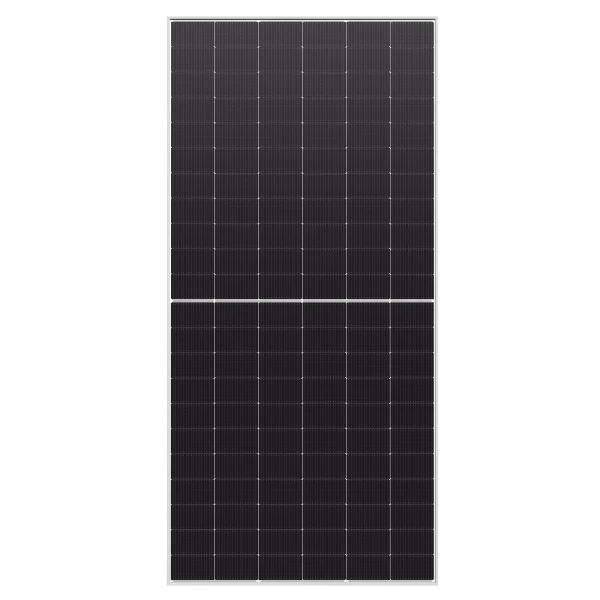What is the difference between monocrystalline and polycrystalline solar panels?
What’s the Difference Between Monocrystalline and Polycrystalline Solar Panels?
Both technologies are widely known, but there are significant differences between them in terms of efficiency, price, and performance. In this article, we’ll take a detailed look at how monocrystalline and polycrystalline solar panels work, their advantages and disadvantages, and help you decide which one might be the best choice for your needs. We'll also discuss efficiency, price differences, and payback time so you get a complete picture of the differences between the two types.
How Monocrystalline Solar Cells Work
Monocrystalline solar panels are made from a single large silicon crystal, which has a uniform and organized structure. This is particularly advantageous for consistent sunlight exposure, contributing to higher efficiency. During manufacturing, purified silicon is melted and cooled into a single crystal, creating a uniform crystal structure.
Monocrystalline panels can be easily identified by their darker, black-colored cells with a uniform surface. A drawback of monocrystalline panels is that they tend to perform worse under low-light conditions. However, when sunlight hits at a good angle, monocrystalline panels generate more energy even in low light. In contrast, polycrystalline panels generally handle poor light angles and shading better.
Advantages and Disadvantages of Monocrystalline Solar Panels
Advantages:
- Higher Efficiency – They typically reach efficiency levels between 21–24%, which is better than polycrystalline panels.
- Longer Lifespan – Thanks to high-quality materials and a precise manufacturing process, they can last up to 30 years.
Disadvantages:
- More Expensive to Produce – Creating a uniform crystal structure is more complex and costly, resulting in a higher price.
- More Sensitive to Temperature – Especially N-type monocrystalline (TOPCon) panels have a notably low temperature coefficient.

Polycrystalline Solar Panels – Pros and Cons
Polycrystalline solar panels are made from multiple silicon crystals formed through a casting process. This production method is more cost-effective since it doesn’t require growing a single uniform crystal like monocrystalline panels. The resulting cells have a bluish hue and an irregular structure due to the presence of multiple crystals.
Although polycrystalline panels generally have lower efficiency compared to monocrystalline models, they have been an ideal choice for certain applications.
Efficiency of Monocrystalline vs. Polycrystalline Panels
Efficiency is one of the most important factors when comparing the two types:
- Monocrystalline panels: Have an efficiency of 21–24%, meaning they can convert a larger portion of sunlight into electricity.
- Polycrystalline panels: Offer 15–18% efficiency, which is lower but still a viable solution.
The difference in efficiency is mainly due to the crystal structure: since polycrystalline panels consist of multiple disordered crystals, electron movement is more restricted, reducing conversion efficiency.

Should You Choose Monocrystalline or Polycrystalline Panels?
To choose the right type of solar panel, you need to consider several factors such as your available budget, roof space, and desired efficiency.
Monocrystalline panels are ideal for those looking for a compact but high-performance solution. These panels convert sunlight into electricity more efficiently, meaning fewer panels may be needed to meet your energy needs. This is especially beneficial if you have limited roof space and want to maximize energy production from a small area.
Important consideration: While the initial cost of monocrystalline panels may be higher, their higher efficiency can lead to a quicker return on investment—especially in locations where maximum energy output is needed in limited space.
If you have a small roof and high energy yield is important, monocrystalline panels are the better choice, as they provide more power per square meter.
If cost-efficiency is your top priority and space is not an issue, polycrystalline panels may be the ideal solution.
SOLARKIT Tips: Price Differences and Payback Time
Monocrystalline panels are generally more expensive due to the complex manufacturing technology. However, because of their higher efficiency, you may need fewer panels, which can be advantageous in the long run.
Polycrystalline panels are cheaper, but due to their larger space requirements and lower efficiency, their payback time may be longer. To optimize power production, consider your roof's orientation and the number of sunlight hours.
Browse the SOLARKIT range and choose the solar system that suits you best!
Tongwei Solar: The New Global Leader in the Solar Industry
The choice between monocrystalline and polycrystalline panels mostly depends on your needs and available budget. Monocrystalline panels offer higher efficiency, longer lifespan, and require less space, while polycrystalline panels provide a more cost-effective alternative.
If maximum performance and long-term return are your top priorities, monocrystalline technology may be the ideal choice. However, if a lower price and larger installation area are not an issue, polycrystalline panels can also be a suitable option.
FAQ – Frequently Asked Questions
1. Which is better: monocrystalline or polycrystalline solar panels?
Monocrystalline solar panels are clearly the winner. They are more efficient and deliver higher performance in a smaller area, though they are more expensive. Polycrystalline panels are more affordable but less efficient, requiring more space to achieve the same output.
2. Why are monocrystalline panels more expensive?
Their manufacturing process is more complex because they are made from a single crystal, which provides a more homogeneous structure and better efficiency. This precise production method leads to higher costs, reflected in the price.
3. What is the expected lifespan of each type?
Both monocrystalline and polycrystalline panels can last 25–30 years with proper maintenance. However, monocrystalline panels generally degrade more slowly, offering more stable energy production over time.
4. Are polycrystalline panels less efficient in cloudy weather?
No, polycrystalline panels are generally more efficient in low-light conditions compared to monocrystalline ones.
5. Where can I buy reliable solar panels?
You can find a wide selection of high-quality monocrystalline and polycrystalline solar panels in the SOLARKIT webshop, carefully selected by our experts.


-thumb.webp)





